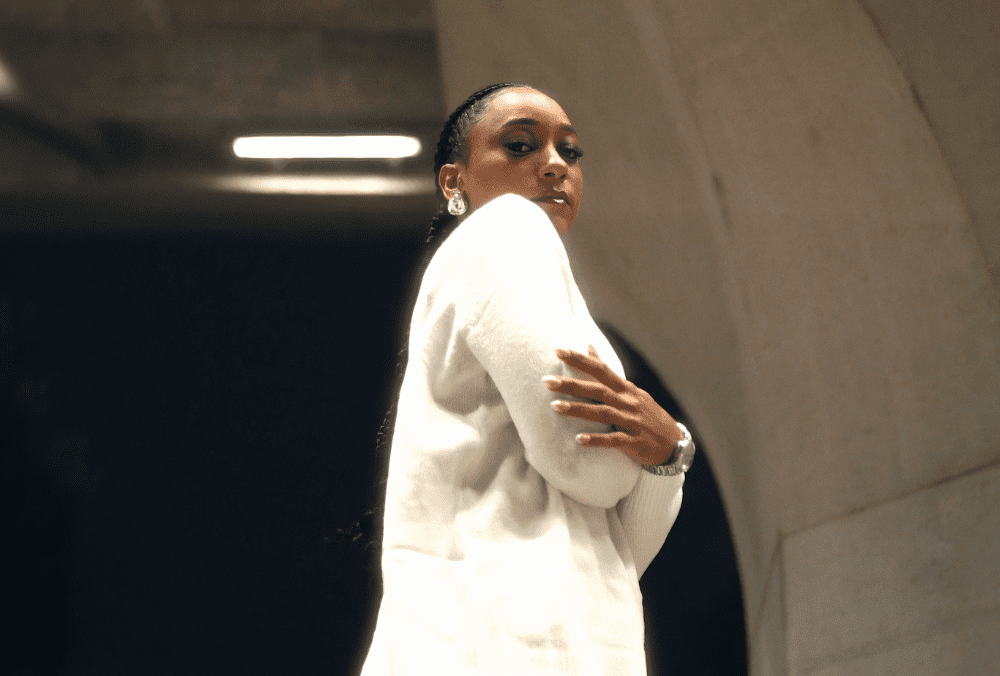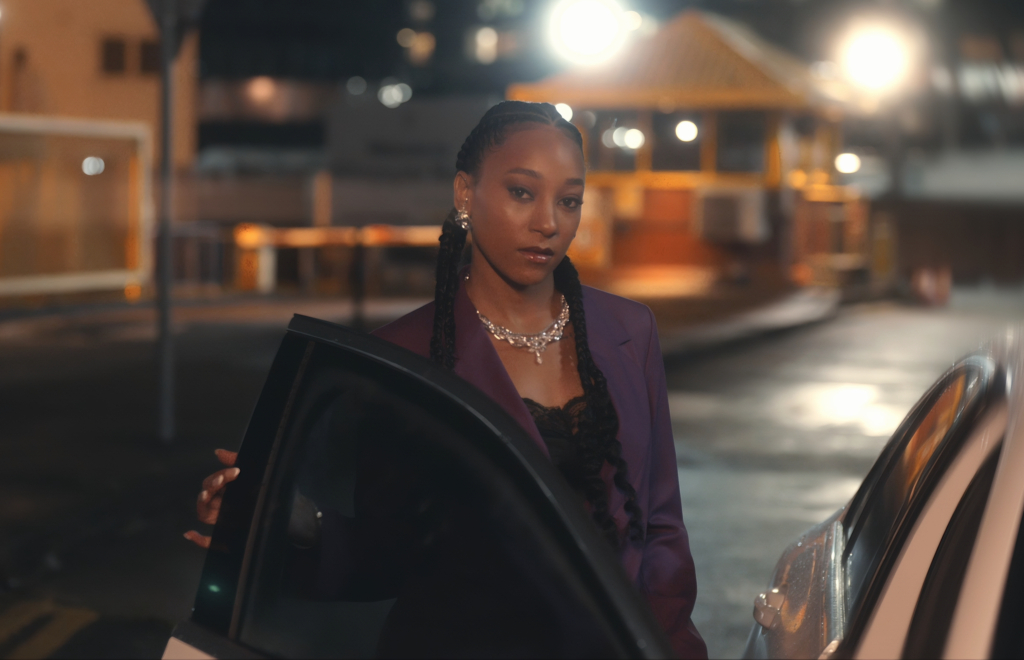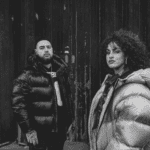
Jamaican-Puerto Rican dancehall sensation Bad Bena is back with her latest release, “Holy Triad,” a hard-hitting track that blends the raw energy of dancehall with the grit of trap. Hailing from the vibrant streets of St. Ann, Jamaica, and now based in London, Bad Bena’s journey is one of resilience, survival, and faith. “Holy Triad” offers listeners a deeply personal exploration of her experiences as an immigrant, navigating the challenges of a new life in a foreign land while holding on to her roots and spiritual strength.
Produced by Saint Lucia’s SnipeZ and engineered by Hot Money (known for working with heavyweights like Stormzy and Stefflon Don), “Holy Triad” showcases Bena’s unique sound and story, making it a testament to her growth as both an artist and a person. In this interview, Bad Bena opens up about the inspiration behind “Holy Triad,” her journey from Jamaica to London, and how her trials have shaped her music.
Congratulations on the release of “Holy Triad.” Can you start by sharing the inspiration behind this deeply personal track and what motivated you to pour your emotions into it?
‘Holy Triad’ is rooted in my life’s journey, where I allow myself to be vulnerable in ways my fans haven’t experienced before. The song draws from pain, struggle, and ultimately, survival.
“Holy Triad” combines elements of dancehall and trap. How did the fusion of these genres influence the final sound of the track, and what were the key elements that you wanted to highlight in the production?
I grew up in Jamaica, surrounded by a rich culture and sounds. Moving to London opened up a whole new world of genres, which blew my mind! In Jamaica, our motto is “Out of many, one people,” and we see ourselves as a nation, not defined by race.
My identity feels like a blend of elements that might not typically go together, and that’s exactly what makes finding inspiration and creating art so exciting for me! My ‘Bad Like Bena’ EP perfectly reflects that fusion.
The Trap Dancehall movement is gaining momentum, and it feels so fresh and aligned with my artistic journey. The beat was produced by SnipeZ and recorded at Hot Money Studios, where I focused on bringing out depth and emotion in the production.
You collaborated with SnipeZ and Hot Money on this track. Can you describe the creative process and how their contributions helped in bringing your vision for “Holy Triad” to life?
SnipeZ is an incredibly talented producer who understands the vision. My creative process was all about tapping into my emotions and drawing from within to tell my story. When I discovered the beat, it instantly resonated with me, and the words just poured out effortlessly.
I remember being in a rough mood that day, and I channelled every bit of pain I’d ever felt. It was like the music became my therapist, allowing me to express things I hadn’t been able to share with anyone else. Hot Money is the best engineer I’ve worked with, and he’s also helped me grow so much as an artist. We created magic that day.
The music video for “Holy Triad,” directed by Bdot, is visually compelling. What were your key considerations in its conceptualization?
I was raised in a creative environment, and I’m a fashion/textiles graduate, so I wanted the video to reflect that background. I personally styled the outfits, opting for a sophisticated yet contemporary aesthetic.
The shoot was somewhat run-and-gun but rich with visual symbolism. We started at an incredible, futuristic DLR station in West Silvertown, designed by WW+P Architects; this scene symbolised humility and hope.
The song is a prayer anthem, and of course, a church was a must! We filmed at the stunning St James’s Church, known for its history and architectural beauty. The final part of the video was shot at Pierre Vivant’s Traffic Light Tree, which, to me, symbolises the Tree of Life.
You’ve described “Holy Triad” as a “soul-wrenching cry from the depths of despair.” Can you discuss the personal experiences or challenges that influenced the raw emotion in your lyrics?
Losing my father at age 17, being accepted into Central Saint Martins, raising money to travel abroad on my own, and facing setbacks like being robbed at the last minute—all these moments have shaped me. Through every high and low, even when I felt I had hit rock bottom, I leaned into my faith and called upon the Most High. This song reflects resilience, and hope for what the future holds.
Your rise from working at Sandals Resort in Jamaica to making a mark in London’s music scene is truly inspiring. How have your past experiences influenced your approach to music and your career today?
I loved working as an entertainment coordinator, where I learned how to use a microphone and host shows in front of live audiences. That job pushed me to speak confidently on stage and connect with strangers.
Although I had been dancing in my mother’s group since childhood, it was at Sandals Resort where I truly found my public voice. The experience there shaped my approach to music and my career, as I discovered the joy of connecting with audiences from all over the world and creating great vibes.

Given your background in fashion and your work in the music industry, how do you integrate elements of visual style and personal branding into your music and public persona?
I approach life like it’s a fashion show! When I look great, I feel unstoppable. Even with an effortless look, fashion is art—and it’s a key part of my self-care and identity. I call my fans the BADEEZ, which stands for Bold, Ambitious, Determined, Elegant, Empowered, and Zealous. That’s exactly how fashion and my music make me feel, and it’s the energy I want to share with my fans.
You mentioned that the Covid-19 pandemic was a turning point for you, leading you to teach yourself how to record vocals. How did this self-learning process impact your artistry and the way you create music?
Self-learning is everything! Even if you attend an educational institution, you’ve got to teach yourself too. Honestly, the pandemic was a blessing in disguise for me. Life alone in the UK was intense, and I needed that break! I got to chill in the sunshine, sip homemade cocktails, cook, and—best of all—teach myself how to record music.
That self-reflection during lockdown gave birth to Bad Bena. I started uploading song covers, and guess what? Bounty Killer noticed! He became like a mentor and later, we even collaborated on an unreleased song called “Going All In”.

Having received support from notable figures like Bounty Killer, how has his endorsement influenced your career trajectory and your approach to making music?
Getting a cosign from Bounty Killer is an absolute blessing! He’s a dancehall maestro and one of the most respected figures in the genre. His talent goes beyond being a legendary artist with that commanding voice—he’s also an incredible A&R. His endorsement has helped grow my audience, and his influence has shaped my own approach to dancehall. It’s been an amazing experience.
Looking ahead, what are your future plans and aspirations in music? Are there any new projects or collaborations you’re excited about that you can share with us?
I’m pleased to announce that I have a new dancehall EP on the way, and I’m getting really vulnerable and honest with this one. It’s a whole new vibe, offering a fresh and exciting sound that departs from the vibe of my debut rap/hip-hop EP, Bad Like Bena. My upcoming project is something my fans have never heard from me before, and I can’t wait for you all to experience it. The title and release date are still being finalised, but trust me—it’ll be worth the wait!


